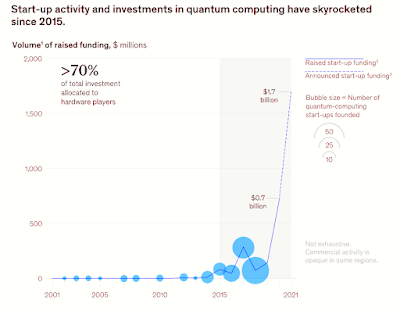The study of communication and control in live creatures and
machines is known as cybernetics.
Although the phrase "cybernetic thinking" is no
longer generally used in the United States, it pervades computer science,
engineering, biology, and the social sciences today.
Throughout the last half-century, cybernetic connectionist
and artificial neural network approaches to information theory and technology
have often clashed, and in some cases hybridized, with symbolic AI methods.
Norbert Wiener (1894–1964), who coined the term
"cybernetics" from the Greek word for "steersman," saw the
field as a unifying force that brought disparate topics like game theory,
operations research, theory of automata, logic, and information theory together
and elevated them.
Winer argued in Cybernetics, or Control and Communication in
the Animal and the Machine (1948), that contemporary science had become too
much of a specialist's playground as a consequence of tendencies dating back to
the early Enlightenment.
Wiener envisioned a period when experts might collaborate
"not as minions of some great administrative officer, but united by the
desire, indeed by the spiritual imperative, to comprehend the area as a whole,
and to give one another the power of that knowledge" (Weiner 1948b, 3).
For Wiener, cybernetics provided researchers with access to
many sources of knowledge while maintaining their independence and unbiased
detachment.
Wiener also believed that man and machine should be seen as
basically interchangeable epistemologically.
The biological sciences and medicine, according to Wiener,
would remain semi-exact and dependent on observer subjectivity until these
common components were discovered.
In the setting of World War II (1939– 1945), Wiener
developed his cybernetic theory.
Operations research and game theory, for example, are
interdisciplinary sciences rich in mathematics that have previously been
utilized to identify German submarines and create the best feasible solutions
to complex military decision-making challenges.
Wiener committed himself into the job of implementing modern
cybernetic weapons against the Axis countries in his role as a military
adviser.
To that purpose, Wiener focused on deciphering the feedback
processes involved in curvilinear flight prediction and applying these concepts
to the development of advanced fire-control systems for shooting down enemy
aircraft.
Claude Shannon, a long-serving Bell Labs researcher, went
even further than Wiener in attempting to bring cybernetic ideas to life, most
notably in his experiments with Theseus, an electromechanical mouse that used
digital relays and a feedback process to learn how to navigate mazes based on
previous experience.
Shannon created a slew of other automata that mimicked the
behavior of thinking machines.
Shannon's mentees, including AI pioneers John McCarthy and
Marvin Minsky, followed in his footsteps and labeled him a symbolic information
processor.
McCarthy, who is often regarded with establishing the field
of artificial intelligence, studied the mathematical logic that underpins human
thought.
Minsky opted to research neural network models as a machine
imitation of human vision.
The so-called McCulloch-Pitts neurons were the core
components of cybernetic understanding of human cognitive processing.
These neurons were strung together by axons for
communication, establishing a cybernated system encompassing a crude simulation
of the wet science of the brain, and were named after Warren McCulloch and
Walter Pitts.
Pitts admired Wiener's straightforward analogy of cerebral
tissue to vacuum tube technology, and saw these switching devices as metallic
analogues to organic cognitive components.
McCulloch-Pitts neurons were believed to be capable of
mimicking basic logical processes required for learning and memory.
Pitts perceived a close binary equivalence between the
electrical discharges produced by these devices and the electrochemical nerve
impulses generated in the brain in the 1940s.
McCulloch-Pitts inputs may be either a zero or a one, and
the output can also be a zero or a one in their most basic form.
Each input may be categorized as excitatory or inhibitory.
It was therefore merely a short step from artificial to
animal memory for Pitts and Wiener.
Donald Hebb, a Canadian neuropsychologist, made even more
significant contributions to the research of artificial neurons.
These were detailed in his book The Organization of
Behavior, published in 1949.
Associative learning is explained by Hebbian theory as a
process of neural synaptic cells firing and connecting together.
In his study of the artificial "perceptron," a
model and algorithm that weighted inputs so that it could be taught to detect
particular kinds of patterns, U.S.
Navy researcher Frank Rosenblatt expanded the metaphor.
The eye and cerebral circuitry of the perceptron could
approximately discern between pictures of cats and dogs.
The navy saw the perceptron as "the embryo of an
electronic computer that it anticipates to be able to walk, speak, see, write,
reproduce itself, and be cognizant of its existence," according to a 1958
interview with Rosenblatt (New York Times, July 8, 1958, 25).
Wiener, Shannon, McCulloch, Pitts, and other cyberneticists
were nourished by the famed Macy Conferences on Cybernetics in the 1940s and
1950s, which attempted to automate human comprehension of the world and the
learning process.
The gatherings also acted as a forum for discussing
artificial intelligence issues.
The divide between the areas developed over time, but it was
visible during the 1956 Dartmouth Summer Research Project on ArtificialIntelligence.
Organic cybernetics research was no longer well-defined in
American scientific practice by 1970.
Computing sciences and technology evolved from machine
cybernetics.
Cybernetic theories are now on the periphery of social and
hard scientific disciplines such as cognitive science, complex systems,
robotics, systems theory, and computer science, but they were critical to the
information revolution of the twentieth and twenty-first centuries.
In recent studies of artificial neural networks and
unsupervised machine learning, Hebbian theory has seen a resurgence of
attention.
Cyborgs—beings made up of biological and mechanical pieces
that augment normal functions—could be regarded a subset of cybernetics (which
was once known as "medical cybernetics" in the 1960s).
~ Jai Krishna Ponnappan
You may also want to read more about Artificial Intelligence here.
See also:
Dartmouth AI Conference; Macy Conferences; Warwick, Kevin.
Further Reading
Ashby, W. Ross. 1956. An Introduction to Cybernetics. London: Chapman & Hall.
Galison, Peter. 1994. “The Ontology of the Enemy: Norbert Weiner and the Cybernetic Vision.” Critical Inquiry 21, no. 1 (Autumn): 228–66.
Kline, Ronald R. 2017. The Cybernetics Moment: Or Why We Call Our Age the Information Age. Baltimore, MD: Johns Hopkins University Press.
Mahoney, Michael S. 1990. “Cybernetics and Information Technology.” In Companion to the History of Modern Science, edited by R. C. Olby, G. N. Cantor, J. R. R. Christie, and M. J. S. Hodge, 537–53. London: Routledge.
“New Navy Device Learns by Doing; Psychologist Shows Embryo of Computer Designed to Read and Grow Wiser.” 1958. New York Times, July 8, 25.
Weiner, Norbert. 1948a. “Cybernetics.” Scientific American 179, no. 5 (November): 14–19.
Weiner, Norbert. 1948b. Cybernetics, or Control and Communication in the Animal and the Machine. Cambridge, MA: MIT Press.



















